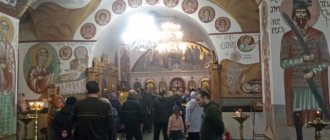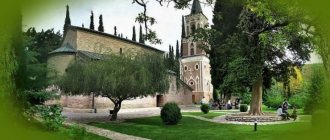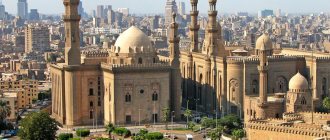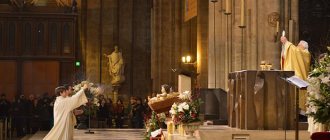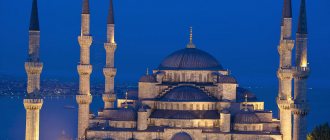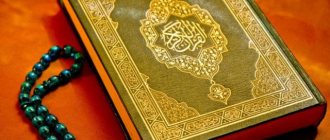In 2011, Georgia adopted amendments to the civil code establishing uniform rights to religion for all religious denominations. This decision was made because Georgia is a multicultural country with a rich cultural and religious history. For many centuries, the people of this country have been one of the most tolerant towards representatives of all religious communities.
Georgia (Georgia) is a European country located in the western Transcaucasus on the Black Sea (East Coast).
Briefly about religion in Armenia
After reading the article, you will cover the entire religious spectrum of Armenia in 15-19 minutes.
The cultural history of the Armenian people dates back to ancient times. Religion, traditions, and way of life are dictated by the religious views of the Armenians. Let’s try to figure out what kind of faith the Armenian people have, when the transition from paganism to Christianity took place, and how Armenian Christianity differs from Russian Orthodox Christianity.
The content of the article:
Religion in Armenia
- 1. What is the religion in Armenia? Who are the Armenians by faith? What do they think about Christ?
- What is the difference between the Armenian religion and Orthodoxy?
- Ancient Armenia
- Place of the Armenian Church in the Christian world
- Venetian Armenia
- Republic of Armenia
The Armenian Church is one of the oldest Christian communities. Moreover, Armenia became the first state to adopt Christianity as a state religion. This happened in 301, when Saint Gregory the Illuminator convinced the ruler of Armenia, Tiridates the Great, to accept Christianity.
Islam in modern Georgia
In general, Georgia is considered the most multi-ethnic and multi-religious country in Transcaucasia. At the beginning of the 2000s, the authorities encouraged the resettlement of Turkish Georgians to their historical homeland. Thus, over 10,000 people received new passports. However, today this policy has been discontinued. Among other things, the Georgian Orthodox clergy is opposed, fearing that compatriots from Turkey will influence the religious composition and demography of the country.
Among the negative aspects of recent years, one can also note attempts at Christian proselytism during the reign of Mikheil Saakashvili, when even a cross appeared on the state flag. Then persistent attempts were made to return the Adjarians, allegedly forcibly converted to Islam by the Turks, to Orthodoxy. There were even mass baptisms.
Be that as it may, the Almighty has blessed this noble people with many Muslims, and this is wonderful. Today, mosques are being built in Georgia, the adhan is sounded, thousands of people worship the Almighty Creator, which cannot but make us happy. The Islamic community lives in peace with its fellow Christians and makes an important contribution to the development of the country.
What is the religion in Armenia
The majority of Armenians belong to Christians. However, their faith is somewhat different from the Orthodox, Catholic and Protestant religions. Today, about 95% of the country’s population, which is about three million people, consider themselves members of the Christian community with the official name “One Holy Ecumenical Apostolic Orthodox Armenian Church.” The remaining 5% of the population preach Eastern Orthodoxy, Protestantism, Islam, Judaism, Yazidism, or are atheists.
Who are the Armenians by faith? What do they think about Christ?
Modern Armenians of the apostolic persuasion consider themselves to be Christians who recognize in Jesus Christ one person, one hypostasis and one nature. The Armenian Gregorian Apostolic Church (AGAC) insists that Christ's deity swallowed up his human nature. For her, the statements of individual fathers about the presence of the flesh of Christ do not matter. The AGAC recognizes the body of Christ not as consubstantial with human flesh, but as incorruptible and impassive, ethereal, uncreated, and heavenly, and did everything that is characteristic of the body, not in reality, but in the imagination.
What kind of Christianity in Armenia is Orthodox or Catholic?
When they talk about the Armenian Church, they assume its autonomy and difference from both Orthodoxy and Catholicism. Historically, these are all different branches of Christianity, so there are a number of differences in rituals and beliefs. Armenian belongs to the Ancient Eastern or Pre-Chalcedonian churches. However, both Orthodox Christians and Catholics live in Armenia.
Reference:
The Armenian patriarch is called Catholicos, which means the highest cathedral primate, but this fact has nothing to do with Catholicism.
The religion of the Armenians - what is the difference from Orthodoxy
Orthodoxy recognizes all 7 Ecumenical Councils. The Armenian Church - only the first three pre-Chalcedonian ecumenical councils:
- In Nicaea in 325;
- In Constantinople in 381;
- In Ephesus in 431;
The main feature of the Armenian Church, which distinguishes it from the Orthodox Church, is the recognition of only the divine essence of Jesus Christ, while Orthodoxy recognizes both essences - divine and human.
What other dogmatic guidelines distinguish the Armenian Church from the Orthodox?
- In the Armenian Church, unleavened prosphora Nshkhar is used during the liturgy, and in the Orthodox Church, leavened prosphora is used;
- Armenians make the sign of the cross from left to right, just like Catholics, while Orthodox Christians do it from right to left;
- On the Armenian cross you can rarely see the crucifixion of Christ, but there are plant elements there - branches and leaves that symbolize life conquering death through the Savior;
- Unlike the Orthodox, there is no iconostasis in Armenian churches, and all sacred rites on the altar are performed in front of the worshipers, except for services on Holy Week;
- Orthodox believers celebrate all Christian holidays according to the Julian calendar, and Armenians - according to the Gregorian calendar. Accordingly, Christmas and Easter occur on different days;
- There are 5 highest spiritual degrees and orders in the AAC. Catholicos is the highest rank, followed by bishop, priest, deacon and reader. In Orthodoxy there are only 3 higher orders: bishop, presbyter and deacon;
- The Armenian fast begins 70 days before Easter and lasts 5 days; it is called Arachavirk.
- During Pentecost during Lent, Armenians are not forbidden to try cheese and eggs on Sundays;
The main differences between the Armenian Church and other Orthodox churches
The religion of the Armenian people is unique; it seems to be on a different plane of Christianity. The Armenian Apostolic Church is close to the Orthodox Church, but the influence of Catholicism is very noticeable in it. For example, the walls of Armenian churches are decorated with paintings, and the service is accompanied by an organ. All services in the Armenian Apostolic Church are traditionally conducted in the ancient Armenian language - Grabar. In the Russian Church, the liturgical language is Church Slavonic, and in the Catholic Church - Latin and national church languages.
Armenian Christians do not pray in front of icons; there are only a small number of them in churches. In their homes, believers pray to the crucifixion of Christ. in prayer words and songs in the Armenian Church only one of the faces of the triune God is exalted, while in the Russian Orthodox Church the entire Divine Trinity is glorified. Church holidays of the AAC take place according to the Gregorian calendar and, most often, coincide in date with the Catholic ones.
What Muslim peoples live in Georgia
In addition to the faithful from among the ethnic Georgians, Islam in Georgia is represented by Azerbaijanis, Kist Chechens, Lezgins, Meskhetian Turks, Avars as well as Tatars, Laks, Abkhaz Muslims... There are even Muslim Armenians called Hemshils. And, of course, Anatolian Turks, Arabs and Persians, of whom, however, there are not so many. Today, the number of Muslims in Georgia with a population of three million is, according to various estimates, up to half a million people. The majority are local Azerbaijanis living in the southeast of the country.
Lazy
The second largest group are the Muslim Georgians of Adjara, mostly Sunnis. They live in the mountainous regions of the former autonomy. Their number, according to some sources, is over 100,000 people. True, not all Adjarians are Muslims. Many representatives of this subethnic group are Orthodox Christians. The number of Laz in Georgia is not too large; the bulk of these Muslim Georgians live in the territory of modern Turkey, where their number reaches several hundred thousand people. There are no exact data, since Turkey does not keep records of the ethnicity of citizens. By the way, the country's president, Recep Tayyip Erdogan, is a hereditary Laz. His statement on this matter was widely circulated:
I once asked my late father, “Who are we? Laz or Turks? He said that he also wondered about this and turned to his dad. He, in turn, replied: “Look! My grandfather said, when we go to another world, we are asked what God we believe in, who is our prophet and what kind of faith do we have? We will not be asked about our nationality. So when you are asked such a question, say that you are a Muslim and go your way.
Recep Tayyip Erdogan
From a linguistic point of view, the Laz are close to the Mingrelians, but in religion, unlike the latter, they are mainly Sunni Muslims. In Turkey, this subethnic group of Georgians lives in the eastern regions of the Black Sea region.
Meskhi
Meskhetian ethnographic groups are now settled in the Georgian region of Samtskhe-Javakheti and in northeastern Turkey. The Meskhs include the Adjarians living in Adjara, who formed as a separate ethnographic group in the high-mountain gorge of the Adjaristskali River. Sometimes they are confused with the Meskhetian Turks, who were deported by Stalin from the Caucasus in the summer of 1944. There are ethnic differences between them. Most experts consider the Meskhetian Turks (they call themselves Ahiska Turks) to be descendants of the autochthonous population of the Meskheti region, who mixed with Turkic tribes. As a result, they themselves became Turkic-speaking. Unlike the Meskhetians, who speak one of the Georgian dialects.
Armenia before and after the adoption of Christianity
The history of the emergence of the Armenian people goes back to ancient times. Today, most Armenians are adherents of the Christian religion, but this was not always the case.
Ancient Armenia
In ancient times, before the adoption of Christianity, Armenians had an extensive list of pagan gods and patrons. Unlike Slavic, Armenian paganism turned out to be well documented. Armenian, Roman and Greek authors wrote about the rituals of those times.
The highest power that created Heaven and Earth, as well as other gods and man, was the main god-demiurge Ar or Ararich. Other pagan Gods worshiped by the ancient Armenians were:
- Vahagn - god of Fire and war;
- Anahit - mother goddess;
- Astghik - goddess of love;
- Mithra Aramazd - sun god;
- Tyr - god of wisdom;
In the ancient era, the gods of the Armenian pantheon were associated with the Greek gods. For example, Anahit - with the goddess of hunting Artemis, Aramazd - with Zeus. The ancient Armenians built large temples for their pagan gods. Almost all of them were destroyed after the adoption of Christianity; only one temple in Garni survived. It was built in Hellenistic style and completely restored in 1970. The Armenian people also believed in demons and spirits: kajis and vishaps, demons of water, wind and storm.
Reference:
Armenian pagans erected huge stone sculptures in the shape of fish near springs and rivers. Some of these structures have survived to this day.
Penetration of Christianity into the territory of Armenia
According to ancient legends, the Christian faith began to penetrate into the territory of ancient Armenia already in the 1st century AD. A number of internal and external factors contributed to the spread of the doctrine. For example, at that time Christianity became widespread in the countries neighboring Armenia: Cappadocia, Osroene, Adiabene. Trade, political and cultural ties with these countries favored the penetration of the Christian religion into Armenia. The first preachers and bearers of the Christian religion were the apostles Thaddeus and Bartholomew, who appeared on the territory of Armenia around 43 AD. Coming from Assyria, they baptized the families of princes and ordinary people and are known as the “Enlighteners of the Armenian world.”
The first Christian communities arose at the beginning of the 2nd century.
The transition from paganism to Christianity: the baptism of Armenia
The chronicle of Agathangehos “History of the Armenians” states that the adoption of Christianity as the state religion of Armenia is associated with the name of King Tiridates III and the Parthian Saint Gregory the Illuminator. For refusing to worship pagan gods, the king imprisoned Gregory the Illuminator in a pit for 14 years. Also, the persecution of Christians by Tiridates III is associated with the names of blessed Hripseme, Gayane and thirty-two nuns. The reprisal against them was very cruel. After such acts, the king fell into madness. It was only after Tridates was convinced to release Gregory that he was healed by this saint. In gratitude, the king was baptized, and Gregory the Illuminator was ordained Catholicos of the Armenian Apostolic Church. In 301 AD, the Baptism of Armenia took place and Christianity became the state religion in the country.
The struggle for religion: the struggle with Persia for the Christian faith
During the first two centuries, Christians in Armenia were forced to secretly preach their religion, since paganism remained the state religion and its followers made up the majority of the population. Christians were subjected to violence and persecution, first by the Persian Sassanid kings, then by the Arabs, who forced the Armenians to renounce their faith in Christ and profess the faith of their conquerors. So, 330-340. Persian king Shapukh II intensified the persecution of Christians. Tens of thousands of martyrs died during this period. Until the end of the 4th century, Persia, with the help of fire and sword, tried to forcibly convert Armenia to Zoroastrianism, but the Armenian people managed to defend the right to profess Christianity.
A striking example of armed self-defense of Armenian Christians was the Battle of Arava, which took place in 451. 66 thousand Armenian soldiers, old men, women, monks stood up against the two hundred thousand Persian army. Then the Armenian army was defeated and suffered heavy losses. The Persians took captive many Armenian clergy, led by the Catholicos, captured and ravaged the country. However, Christianity managed to survive and for 30 years the Armenians continued to defend their right to profess Christianity in the fight against Persia. In 484, the Nvarsak Peace Treaty was signed between Persia and Armenia, recognizing the right of the Armenian people to freedom of practice of Christianity.
Founding of the Armenian Church
After King Tiridates III religiously dissociated himself from Sasanian Iran, which sought to subjugate Armenia, Armenia adopted Christianity as the state religion. Almost immediately it was decided to erect a spiritual center of the AAC. In 303 AD, the Etchmiadzin Cathedral was built, which became the seat of the Supreme Patriarch and Catholicos, as well as a religious center and place of pilgrimage for all Armenians.
All shrines of pagan idols were gradually destroyed, and Christian churches and monasteries were erected in their places.
Apostasy from Orthodoxy
The break with Orthodoxy among representatives of the Armenian Church arose in the question of the union of two natures in Christ - Divine and human. The first disagreements began to appear in the 6th century. A new branch suddenly arose in Christianity, whose supporters denied the combination of divine and human principles in Jesus Christ. But at the 4th Council of Chalcedon, this point of view was recognized as a false trend, a Monophysite heresy. However, since then the Apostolic Armenian Church has found itself alone, since it still looks at the origin of Christ differently from all Orthodox Christians.
Important!
Despite the contradictions, the AAC forms faith and unity in its students, teaches respect and patience towards other religious movements.
Muslim yoke
In its history, Armenia has experienced many wars and upheavals. In the middle of the 7th century, Armenia was captured by the Arabs; in the 11th century, control over a large territory of the country was seized by the Seljuk Turks. The country was then partly under Georgian control and partly under Mongol control. Until the 19th century, the Muslim yoke continued in Armenia, until, as a result of the wars victorious for Russia, in 1878 the eastern part of Armenia became part of the Russian Empire. In the Ottoman Empire, the Armenian people continued to be subjected to repression, which in 1915–1921 turned into real genocide. About a million Armenians were brutally exterminated by the Turks in those years.
Armenian Church today
As before, the spiritual center of all Armenians remains the Etchmiadzin Cathedral, which is located 20 kilometers from Yerevan. The First Hierarch of the AAC is the Catholicos of All Armenians, the Supreme Patriarch of the Armenian Apostolic Church. He is in charge of 4 patriarchates.
Four Patriarchates of the Armenian Apostolic Church
- Etchmiadzin Catholicosate, located in Armenia;
- Cilician Catholicosate, which includes the dioceses of Lebanon, Cyprus and Syria;
- Patriarchate of Constantinople, which includes the churches of Turkey and Greece;
- The Patriarchate of Jerusalem includes the dioceses of Israel and Jordan.
This is interesting!
Despite the similarity of the names “Catholicos” and “Catholicism,” the First Hierarch of the Armenian Church has nothing to do with the Catholic faith.
Chveneburi - ჩვენებური
Chveneburi (literally translated, ours, ours) are the descendants of Sunni Muslim Georgians who in the 19th century did not want to live in Georgia, which became part of Orthodox Russia. And they moved as muhajirs to the Ottoman Empire.
In total there are about 300 thousand people in Chveneburi. They like to call themselves not Kartveli (Georgians) , but in Turkish გურჯი (Gurji).
Christianity of Armenia: features of the Armenian Apostolic Church
The Armenian Apostolic Church calls itself truly Christian, having accepted faith from the Jerusalem and Byzantine Churches. However, the Armenian Church failed to preserve the Christian religion in its original form. In 506, the Armenian Church officially separated from the Byzantine Church, which radically influenced the history of the country, its political and social activities.
Liturgical features of the Armenian Apostolic Church:
- For communion, unleavened bread is used, and wine is not dissolved in water;
- Liturgy is celebrated on Sundays and on special occasions;
- Confirmation takes place immediately after baptism;
- The sacrament of unction is performed only on clergy and immediately after death.
Place of the Armenian Church in the Christian world
The Armenian diaspora is considered very large in the Christian world. The dioceses of the AAC are located on all continents, and the number depends on the number of believers in a particular country. For example, in Africa the AAC is represented by only one diocese, while in Europe there are more than ten. The Novo-Nakhichevan and Southern Russia Dioceses have been established in Russia. The Modern Orthodox Church of Russia maintains friendly relations with the Armenian Apostolic Church. But the AAC and the Russian Orthodox Church still do not have a Eucharistic dialogue. And this implies the impossibility of an Orthodox person praying in an Armenian Christian church.
Armenian rite in church
One of the most important rituals, characteristic only of Armenian Christianity, is Matah, or an offering in gratitude to God. The meaning is to give alms to poor or sick people. Anyone who wishes, as a form of any request or thanksgiving to God, can give Matah, that is, set the table for all those in need. Moreover, it is prohibited to invite relatives or rich people to Matah.
Structure of the Armenian Church
The highest level of the hierarchical ladder in the AAC is occupied by the Catholicos. In his power: the blessing of new laws and new holidays, the consecration of the chrism, the founding of new dioceses. The next ecclesiastical rank is that of bishop; he is required to take monastic vows and have an academic degree. Bishops head dioceses.
The main link in church life is priests. They are responsible for the spiritual education of believers, performing divine services and administering the Sacraments. Deacons and readers are called upon to assist priests.
Armenian church calendar
Just like Catholics, followers of Armenian Christianity adhere to the Gregorian calendar. Most holidays in the Armenian church calendar are transitional, that is, they are celebrated on a specific day of the week. Accordingly, the date of celebration changes from year to year. The basis of the AAC calendar cycle is Easter, or, in Armenian, Zatik. According to Christian tradition, Armenians celebrate the birthday of Christ on January 6th.
Religion of Armenians in Russia
For many centuries now there has been no church unity between the Armenian Apostolic Church and Russian Orthodoxy, but this does not destroy the closeness of spiritual ideals and the common system of values. The largest Armenian diaspora in Russia has a rich history that has been going on for more than two hundred years. Many Armenian churches have been erected in a number of large cities in southern Russia. There are 27 AAC communities registered on the territory of the Russian Federation; they are part of the New Nakhichevan and Russian Diocese with its center in Moscow. Armenians in Russia continue the traditions of Armenia and belong to the Armenian Church.
Christian religion in Georgia
The adoption of Christianity in the history of Georgia is dated 337. Historical sources say that the Christian religion was brought to this country by the wanderer Andrei Pervozanny. He preached in many large cities, carrying with him the miraculous image of the Mother of God. These events marked the beginning of the formation of the concept of what faith prevails in Georgia at the moment.
The Christian faith survived and strengthened its rights among Georgians even during periods of aggressive aggressive activity on the part of Arabs, Turks, and Persians, who were imposing their religion on the Orthodox country. Over the entire period from IV to XIX (until the moment of joining the Russian Empire), she not only defended her rights to the Orthodox faith, but also conducted active educational activities within the framework of this. Monasteries and churches were built, which at that period of history acted as educational centers conducting theological and scientific activities. At the end of the 1917 revolution, the Georgian Church was recognized as independent.
History of Georgian Orthodox Christianity
In the history of Georgian Orthodox Christianity there is a tragic story of mass self-sacrifice in the name of faith. In 1226, Khorezmshah Jalaletdin invaded Georgian territory. Suppressing the faith of local residents, inclining them to Islam, he ordered all the icons to be laid out on the bridge, after which believers in Orthodoxy were to desecrate them. 100 thousand people were executed on that bridge for refusing to carry out orders. Among them were women; there was no mercy for either the elderly or children. The deed of these people is still revered in Georgia, their memory is honored on October 31 and all of them are canonized.
Another mass murder of Christians on the basis of faith in 1386. was committed by the troops of Tamerlane. The nuns in the Kvabtakhevsky monastery were completely exterminated. The same account, but through the fault of Abbas, expected 6,000 monks killed in the David Gareji monastery in 1616.
Georgian Christianity in the modern state
The Georgian Apostolic Autocephalous Orthodox Church is the representative of the community. This organization is headed by the Patriarch - Catholicos. The history of this religion is inextricably linked with the culture of the country, namely the creation and development of writing (mrgvlovani).
In 2001 the government and the church signed an agreement, which indicated the advantages of the Orthodox Church, as the official one, over other faiths. But an addition to the Constitution in 2011 equalized all religions in the country.
Armenian Catholic Church
Officially, the Armenian Catholic Church is a community of people who broke away from the AAC and converted to Catholicism. The number of followers of the Armenian Catholic Church currently is about 740 thousand. Divine services for Armenian Catholics take place according to the Armenian rite.
Venetian Armenia
In the southern part of the Venetian lagoon there is a small island of San Lazzaro degli Armeni, one of the world centers of Armenian culture. In 1717, the Armenian Catholic monk Manuk di Pietro founded a community here, which built a monastery, library, and church on the island. Currently, the monks conduct excursions around the island for those who wish.
Where do Armenian Catholics live?
Currently, the largest number of Armenian Catholics live in Beirut (Lebanon), Aleppo (Syria), Georgia, and Iraq. There are just over one million of them in the world.
Georgians are Muslims
Thus, Georgia again hears Islamic preaching, which continues until the 19th century. As a result, entire sub-ethnic groups of Muslim Georgians are distinguished from the Georgian people - Laz, Adjarians, Meskhetians, etc. No facts of violence are noted.
In the second half of the 19th century, many Muslim Georgians moved to neighboring Turkey due to dissatisfaction with the Russian rule established at that time. As a result of the mass exodus, entire villages in Adjara and Meskheti were deserted.
In Turkey, Muslim Georgians today are called by the ethnonym “Gurju”, and the local Georgians themselves call themselves “Shavshetians” and “Imerkhevites” or act under the collective name “Chveneburi”.
The resettlement process had a significant impact on the religious composition of the population of Georgia. There are much fewer local Muslims. But to this day Islam is the second largest religion in this country.
In general, it must be said that before the establishment of power in St. Petersburg, Islam and Muslims occupied a much more prominent position in Georgia than in our time, being not the first, but a significant integral part of the people, their culture, history and identity. For centuries, Tbilisi was known throughout the world as Tiflis, a name that was used by the Arabs and then by the Turks. By the way, in official Russian-language documents the city was called Tiflis right up until 1936.
Official religion of the inhabitants of Armenia
The Armenians became the first people on earth to officially adopt Christianity as a state religion. Today, more than 95% of the inhabitants of this country are members of the AAC and profess the Christian religion. The Constitution of the State of Armenia states that the population of the country has the right to choose a religion, as well as practice and change their religious beliefs, so there is no official religion accepted at the state level in the country. Armenia is a secular state.
Republic of Armenia
The country occupies about 30,000 km² of area and borders Georgia, Azerbaijan, Iran and Turkey. The national currency is dram. The resident population at the end of 2021 is about 3 million people.
Statistics about religions in Armenia
According to the population census conducted in 2011, the religious composition of the population in percentage is as follows:
- 95% of the population belongs to the AAC;
- 1% - Protestants;
- 0.5% - Catholics;
- 0.5% - Orthodox;
- 0.3% - Yazidis;
- 0.25% are Muslims;
- 0.23% are Jewish;
- 0.2% - Baha'is;
- 1.22% are atheists;
As can be seen from the statistical data, the Christian religion predominates in Armenia; representatives of the Armenian Apostolic Church mainly live in Armenia.
Other religions of the country: religious minorities of Armenia
There is a high degree of religious assimilation among a number of national minorities in the country. There is also a tendency to reduce the share and number of religious communities that are not common among ethnic Armenians.
Buddhism
Several dozen Buddhists live in the country, and in Yerevan there is a small Buddhist community consisting of Armenian intelligentsia. Armenian Buddhists avoid publicity, preferring meetings at home.
Yezidism
The Yezidis live to the north-west of Yerevan, in the villages of Aragatsotn. In the Armenian province of Armavir there is a Yazidi temple “Ziarat”.
Judaism
About 3 thousand Jews live in Armenia, mostly in Yerevan.
Islam
This religion is practiced by Kurds, Persians, and Azerbaijanis living on the territory of Armenia. The Islamic community numbers several thousand people. There is a functioning mosque in Yerevan.
Molokans
There are about 2,500 representatives of the Molokan religion in the country.
Paganism
Among the Armenians there is also a neo-pagan religious movement that recreates the traditional pre-Christian religion. They regularly hold their rituals in the Garni Temple.
Atheism
Irreligiosity, including atheism, is not represented in Armenia in any institutional form. However, there are atheists in the country, about 1% of the population.
Orthodox Christians in Armenia
In the country today there are five parishes of the Maikop and Armavir diocese of the Russian Orthodox Church, in which two priests and one deacon serve. The Orthodox community numbers about 15 thousand people, it includes Russians, Ukrainians, Greeks, and most of the Assyrians.
Freedom of religion in Armenia
The Constitution of the state enshrines the right of its residents to freedom of religion. Armenians also have the right to practice or change their religious beliefs. The majority of Armenians consider Christianity to be their national religion.
Armenia and Azerbaijan religion
Azerbaijanis represented a national minority in Armenia that was significant for the last two centuries, until the ethno-political conflict in Nagorno-Karabakh. During the conflict, most Azerbaijanis left Armenia. The religion of the majority of Azerbaijanis is Islam, the majority of Armenians are Christians belonging to the Armenian Apostolic Church.
Armenia and Georgia religion
Armenians and Georgians are the two main Christian peoples of the Caucasus, but relations between them are ambiguous. Several hundred Georgians live in Armenia. The religion of Georgians is Christianity, but they do not belong to the AAC.
The emergence of Islam in Georgia
It all started in 645, just 13 years after the death of the Prophet Muhammad (peace be upon him). Then Muslims first appeared on the territory of Georgia, and by 735-37 these lands became part of the Islamic caliphate. From then until the 12th century, Tbilisi was an important cultural and religious center of the local emirate. Nevertheless, the majority of the Georgian population remained largely in the bosom of the Christian tradition - no one was forced to change their faith.
After the 12th century, Islamic influence declines. But only for three hundred years: already in the 15th century, Georgia fell into the orbit of Muslim powers: the west of the country came under the control of the Sunni Ottoman Empire, and the east - of Shiite Safavid Iran.
Monasteries of Armenia - centers of culture and science
Numerous ancient monasteries, temples and churches have always played the role of economic, religious, and educational centers in Armenia. There they studied theology, philosophy, literature, music, natural sciences, foreign languages and much more. When monasteries were attacked by the enemy, priests and monks fought for their flock, theological works and museum exhibits. Churches and monasteries became impregnable fortresses.
Reference:
Many Armenian churches are named in honor of St. George the Victorious. This saint is the most revered among Christians in the Caucasus.
